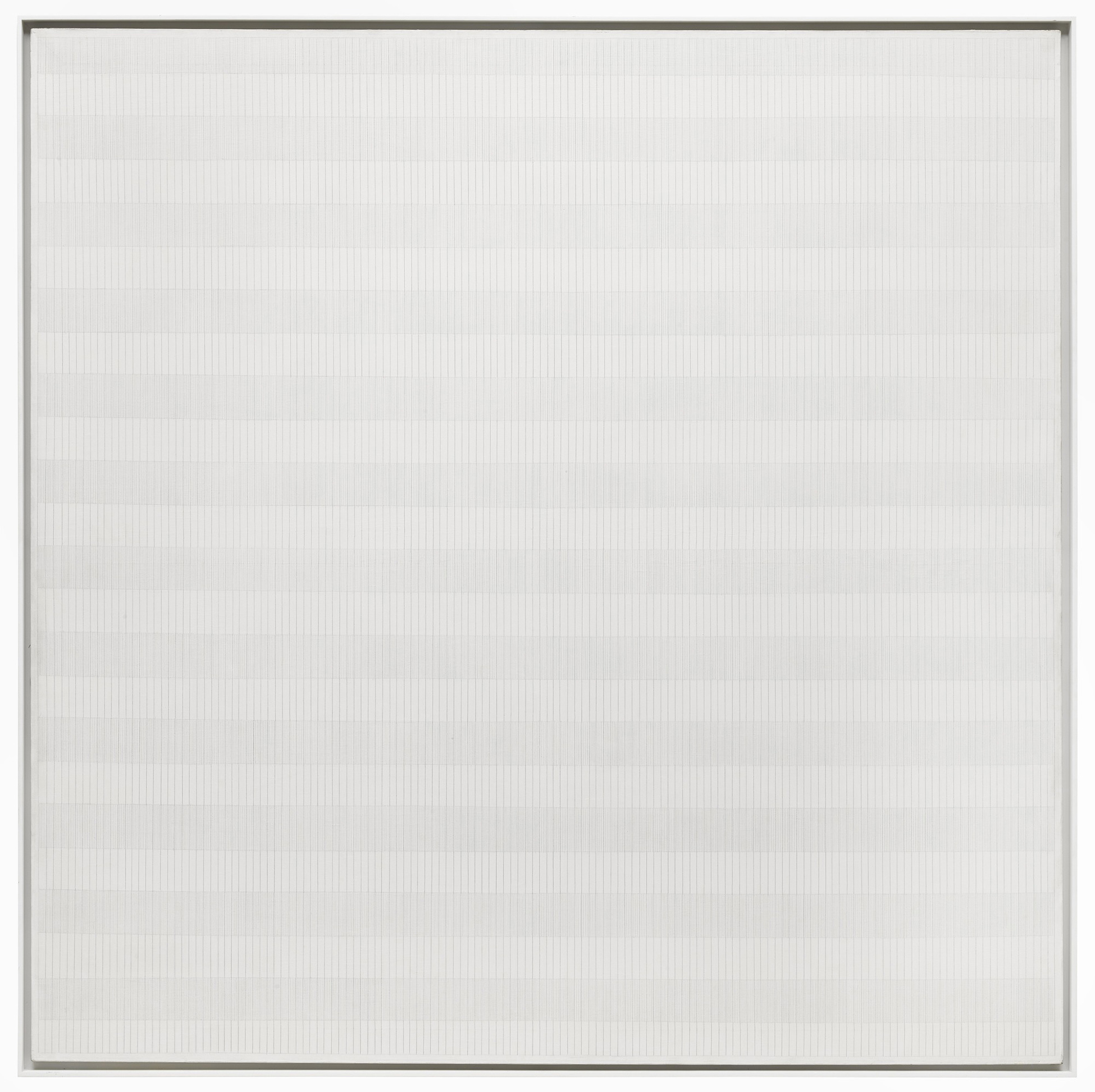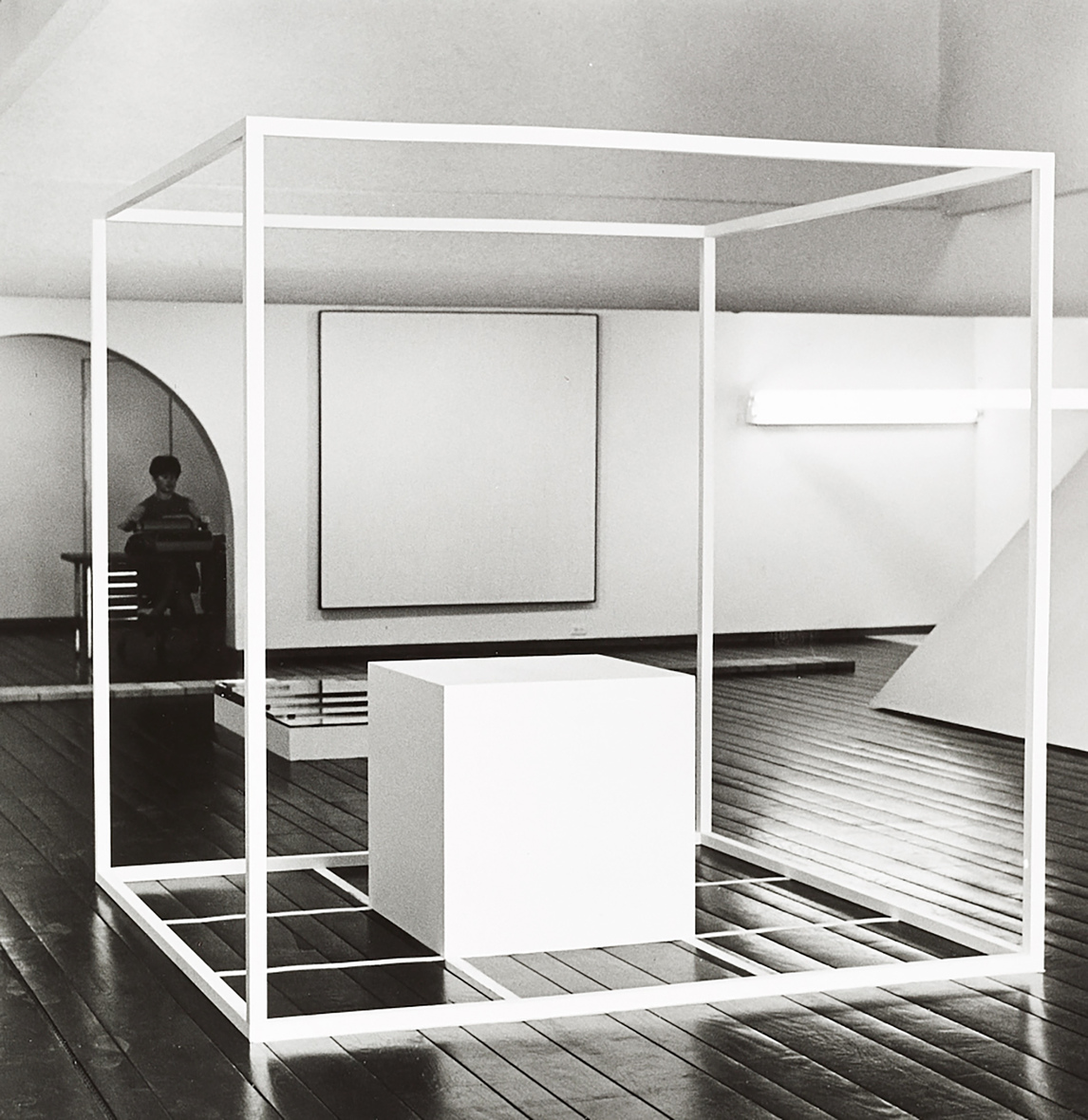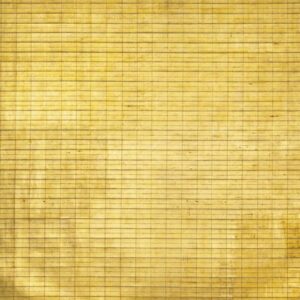The Tree 1964

Agnes Martin, The Tree, 1964
Oil and graphite on canvas, 182.9 x 182.9 cm
Museum of Modern Art, New York
© Agnes Martin / SOCAN (2019)
The Tree is one of the best-known examples of Martin’s mature grid paintings from the mid-1960s. Although it is not her earliest grid, it is often associated with the earliest moments of her signature style owing to her proclamation, “When I first made a grid I happened to be thinking of the innocence of trees. . . and then this grid came into my mind and I thought it represented innocence, and I still do, and so I painted it and then I was satisfied.”

Hundreds of hand-drawn graphite lines cross the painted off-white canvas horizontally and vertically, creating countless small, vertical rectangles. Half of the rectangles contain four additional vertical graphite lines in long rows that extend horizontally across the canvas, creating the effect of twenty-four horizontal bands alternating off-white and grey. The title of the painting, The Tree, is in keeping with Martin’s practice in the 1960s of naming canvases after objects. Although the title refers to a specific object, it is impossible to discern any connection to or representation of a tree in the painting. Other works from the era with similar names, such as The Beach, 1964, or Orange Grove, 1965, belie any overt connections to their titles as well. Martin was not trying to represent a tree, or a beach, or an orange grove, as physical objects or places in her paintings; rather, she aimed to capture the feeling of those objects.
Through her participation in the 1967 exhibition 10 at Dwan Gallery in Los Angeles, Martin’s grid paintings became associated with the art movement called Minimalism. Artists associated with the movement created work characterized by simple forms, the creative use of colour, and a deliberate lack of expression that emphasized the materiality of art. Although Martin’s grid paintings are similar in appearance to the works of Sol LeWitt (1928–2007), there are significant differences: LeWitt created three-dimensional grids, and he and the Minimalists were interested in materialism and intellectualism; by contrast, Martin was primarily concerned with representing abstract emotions. In 1965, the Museum of Modern Art acquired The Tree, making it Martin’s first painting to be purchased by a major New York museum.

 About the Author
About the Author
 More Online Art Books
More Online Art Books
 Acknowledgements
Acknowledgements